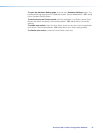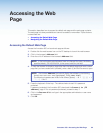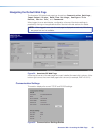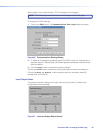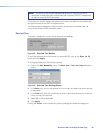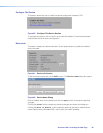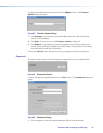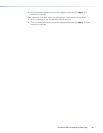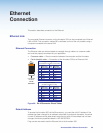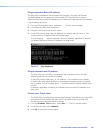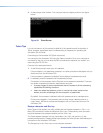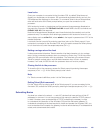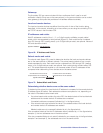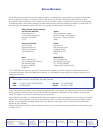
Local echo
Once your computer is connected to the Annotator 300, by default Telnet does not
display your keystrokes on the screen. SIS commands are entered blindly, and only the
SIS responses are displayed on the screen. To command Telnet to show all keystrokes,
enter set local echo at the Telnet prompt before you open the connection to the
processor.
With local echo turned on, keystrokes and the processor’s responses are displayed on
the same line. Example: 1*1*1!01Out01 In01 All where 1*1*1! is the SIS command and
01Out01 In01 All is the response.
Note that all keystrokes are displayed, even those that should be masked, such as the
password entry. For example, when entering a password with local echo turned on, you
see a display such as a*d*m*i*n*, where admin is the keyed-in password and ***** is the
masked response
Local echo can be turned off by entering unset local_echo at the Telnet prompt. If your
computer is connected to the Annotator 300, and you need to access the Telnet prompt
to turn local echo off, enter the escape sequence (Ctrl + ]).
Setting carriage return-line feed
Unless commanded otherwise, Telnet transmits a line feed character only (no carriage
return) to the connected processor when you press the <Enter> key. This is the correct
setting for SIS communication with the processor. The Telnet set crlf command forces
Telnet to transmit carriage return and line feed characters when <Enter> is pressed;
however, if crlf is set, the SIS link with the processor does not function properly.
Closing the link to the processor
To close the link to the processor, access the Telnet prompt by entering the escape
sequence (<Ctrl> + <]>). At the Telnet prompt, enter close.
Help
For Telnet command definitions, enter ? at the Telnet prompt.
Exiting Telnet (Quit command)
Exit the Telnet utility by entering quit at the Telnet prompt. If you are connected to the
Annotator 300, access the Telnet prompt by entering the escape sequence (<Ctrl> + <]>).
Subnetting Basics
A subnet is a subset of a network — a set of IP devices that have portions of their IP
addresses in common. It is not the purpose of this manual to describe TCP/IP protocol
in detail. However, some understanding of TCP/IP subnetting is necessary in order
to understand the interaction of the Annotator 300 and the mail server gateway. To
understand subnetting at the level required to install and operate the Annotator 300, you
must understand the concepts of a gateway, local and remote devices, IP addresses and
octets, and subnet masks and octets.
Annotator 300 • Ethernet Connection 102



